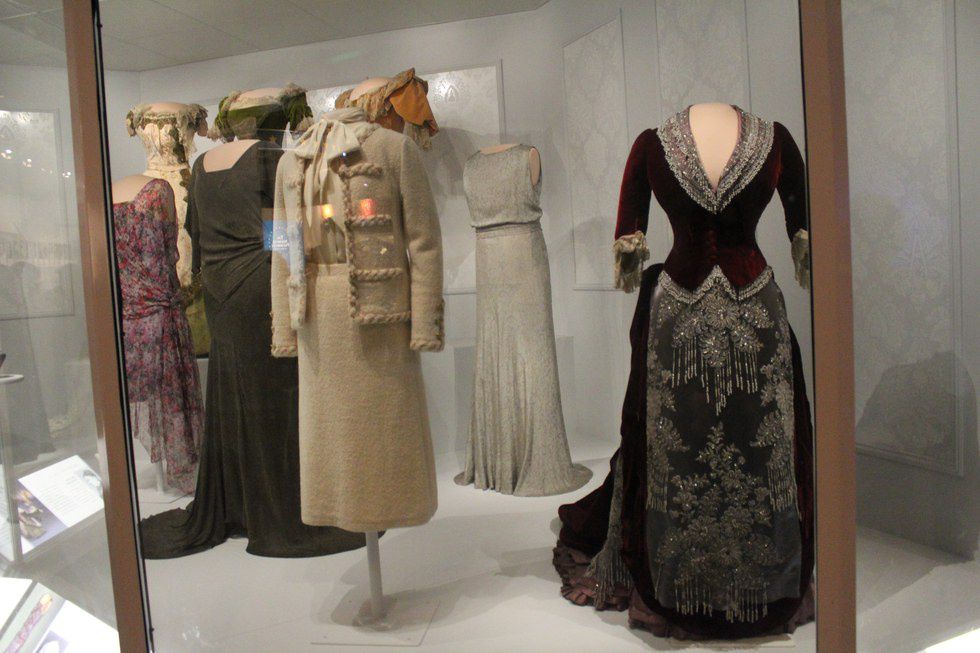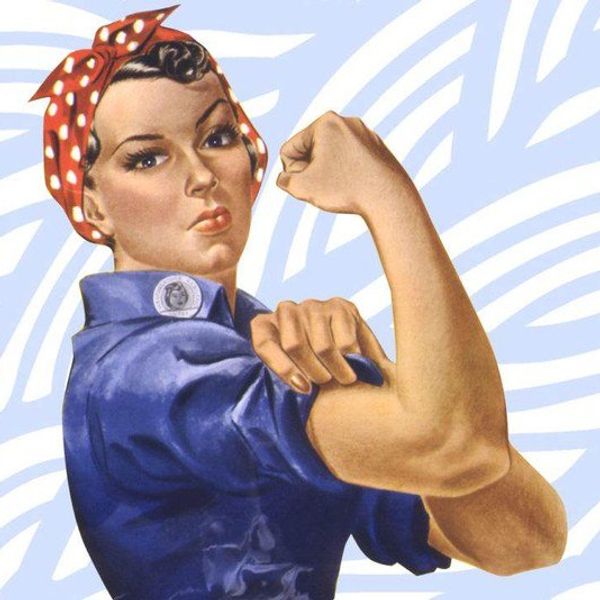During my most recent trip to Washington D.C., I was excited to visit the First Ladies exhibit at the Smithsonian National Museum of American History. Before I even reached the exhibit, I was somewhat surprised to find that everyone whom I heard referring to the exhibit referred to it is “the First Ladies’ Dresses” – despite the exhibit simply being named “The First Ladies.” Before even reaching the exhibit about the history and impacts of the first ladies, the tone surrounding the exhibit had already been set as focusing on the women’s wardrobe and appearances.
It went downhill from there.
Next to the entrance to the exhibit is a sign that reads “First ladies are unofficial but important members of presidential administrations. For more than 200 years, we have judged their clothes, their parties, their projects, and their roles in the White House. While some duties, such as White House hostess, are performed by all first ladies, the job does not come with a specific list of responsibilities. America’s first ladies have been national advocates, trendsetters, leaders, and role models. Each one remakes this undefined and challenging position to suit her own interests, the needs of the administration, and the public’s changing expectations of women in general and first ladies in particular.”
I found it fitting that the sign immediately established the normalcy of judging these women on their appearances and parties – as if a woman’s appearance and parties really determine her value in society. Understandably, the role of first lady has evolved significantly since Martha Washington first took the role. Back then, it was much more reasonable to expect that a first lady would be known for her appearance and events hosted; however, in a time in which women are now active voters and independent citizens who are permitted to own land and have a job, it makes less sense for a woman of such influence to be so thoroughly on her appearance and hostess abilities.
When you first walk into the exhibit is the famed collection of dresses worn by various first ladies to the Inaugural Ball; the dresses varied in time periods, styles and sizes. As I read the short description of each dress and the first lady who wore them, I was somewhat surprised by the amount of people who whizzed around me, looking at dresses but not the short descriptions that accompanied each one. People seemed to care not about the rather short descriptions of the each dress and how the first ladies influenced the style of their times; rather, people were more focused on these women’s appearances – and their appearances alone.
What upset me most were the comments and jokes I overheard as I took my time looking at each dress and what little information accompanied each. According to those around me, some dresses were too simple and others were too embellished; some of the first ladies were too thin while other first ladies were not thin enough. I had to stop myself from approaching a woman who seemed to care only about making rude comments about each first lady whose dress was displayed – especially when she commented on the dress worn by Julia Dent Grant, saying “well she was no Skinny Minnie!”
The next portion of the exhibit is entitled “The Nation’s Hostess” and was accompanied by a sign that describes the role of the First Ladies and the events they host in the diplomatic scene. Admittedly, I never realized the importance of hosting White House events. According to the sign, “each reception or dinner is an opportunity for the first lady to help build America’s international relationships, win political friends and public support for the president, or further his administration’s legislative agenda.” I recognize that the position of White House hostess can hold great importance, yet I still found it odd that there is more information on display about the first ladies’ fine china than there is about the first ladies themselves. In fact, this section of the exhibit is the only area where all of the first ladies are listed, along with a portrait of each woman.
Yet again, I was frustrated by the number of people who seemed to be going through the exhibit simply to mock the appearance of each woman.
Following the first ladies fine china is another selection of dresses from Inaugural Balls, these ones belonging to the last seven first ladies (ranging from Michelle Robinson Obama to Patricia Ryan Nixon). I was delighted to see that this portion of the exhibit included more information about the First Ladies and their “projects” while holding the title – as opposed to information about the dresses and the style of their time. In this corner of the exhibit is a video playing on a small screen, featuring the traditional dance between the president and first lady at the Inaugural Ball. Again, people seemed more interested in the dresses than the information about the women who wore them.
The final portion of the exhibit was titled “Changing Times, Changing First Ladies” and included somewhat in-depth information about the impacts of four first ladies: Dolley Madison, Mary Todd Lincoln, Edith Carow Roosevelt and Lady Bird Johnson. This was my favorite section of the exhibit, seeing as it included the most in-depth information about the first ladies’ impacts on the country and the presidency – not just their appearances. However, I was disappointed that this sort of information was not being displayed about more first ladies. Furthermore, I was honestly shocked that in the exhibit there is little to no mention of Eleanor Roosevelt, who was arguably the most impactful first lady and who visibly transformed the very role; as the first lady, Roosevelt was one of the first to be publicly politically active, giving press conferences and speaking out for human rights, children’s causes and women’s issues, working on behalf of the League of Women Voters, writing her own newspaper column, helping the country’s poor, standing against racial discrimination and even traveling abroad to visit U.S. troops during WW II.
I was disappointed mostly with the lack of information about the distinctions of the first ladies. Nowhere in the exhibit is there any mention of the fact the Michelle Robinson Obama is by far the most academically accomplished first lady, seeing as she is the only one to have received both her undergraduate and law degree from an Ivy League university. Nowhere in the exhibit is there any mention of Abigail Powers Fillmore, who was one of President Millard Fillmore’s teachers while he was a student – despite the fact that she was only two years older than him. Nowhere in the exhibit is there any mention of Edith Galt Wilson, who essentially took control of the presidency following the stroke of her husband, Woodrow Wilson.
Although my opinion may be unpopular, I was greatly disappointed with the First Ladies exhibit. Throughout the entire exhibit, I heard those around me making jokes about the appearances of the women being featured; visitors to the exhibit seemed to care very little about the history and legacies of these women, but cared very much about any of their physical imperfections. Furthermore, the only pictures featured of the first ladies were posed portraits (as opposed to candid photographs which could have much more accurately portrayed the women). However, what upset me the most was the fact that the exhibit itself seeming focused on the appearances of the first ladies; by focusing more on the women’s appearances and wardrobes while ignoring the work they did and causes they supported, the first ladies are essentially being reduced to living mannequins.
I left the exhibit feeling greatly disappointed. As of 2012, there have been 44 First Ladies of the United States and although the roles and legacies of these women vary greatly, they did not take the role with pride to be put on display in a museum only to have their appearances mocked. I hope that the First Ladies exhibit can one day more accurately reflect the dignity and excellence exuberated by the women who have held the office up until now; I hope that the exhibit can one day more accurately portray these women and their legacies.


























